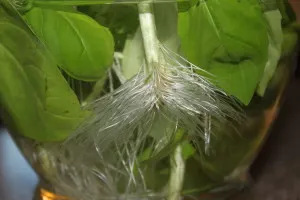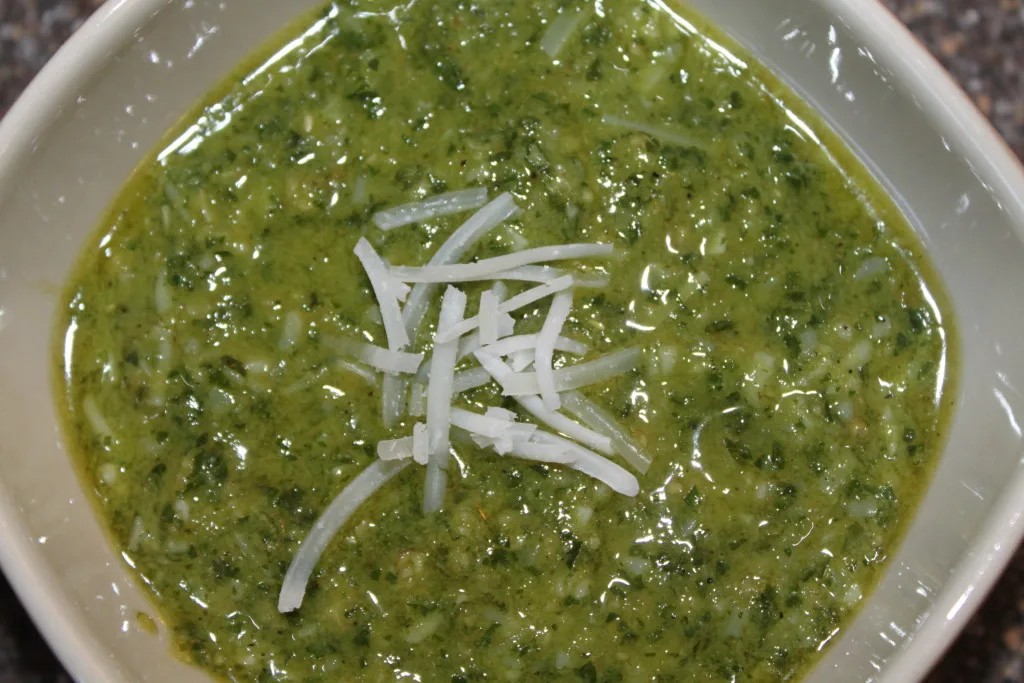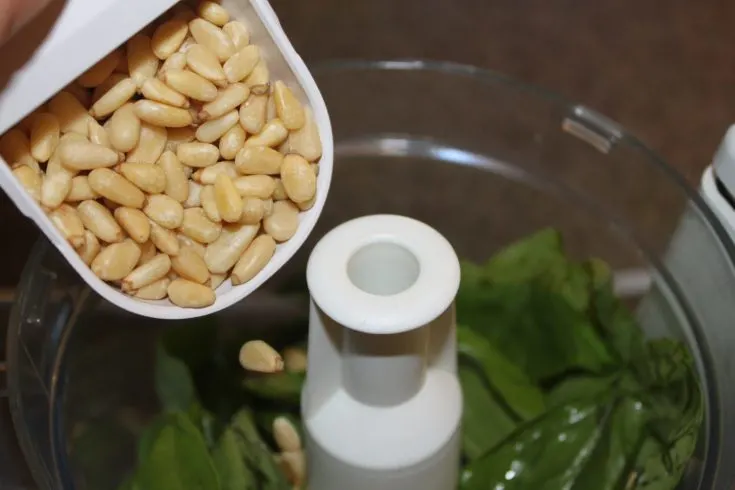Basil is one of the easiest herbs to grow, and it can quickly can become large and out of control.
If you planted basil this spring, I am sure that you have personally witnessed it’s immense growth and aroma. Now, what to do with it all?
The absolute best way to preserve both the flavor and color of basil is to make Pesto, a common Italian sauce made with fresh basil, garlic, olive oil and pine nuts.
Pesto freezes well and allows basil to keep much fresher than any other preservation method.
Basil gets its flavor from some very volatile aroma compounds that are easily lost, so you need to be gentle as you work with it.
Don’t even think about drying the basil; it will lose all of its flavor and you’ll be stuck with some crumbling, flavorless leaves.
After you make your pesto, and you still have several sprigs of basil left, here are some other ways to maximize the use and preserve your basil for use later in the year.
1. Make sure to cut your basil before it goes to seed – this will ensure that you receive the maximum flavor from each leaf.

Basil cut and placed in a vase of water….it started rooting after a week, but the leaves are still good to use.
2. If you aren’t quite ready to use the basil but need to cut it down, cut each stem leaving at least 2 pairs of leaves per stem.
Place the stem in lukewarm water without submerging the leaves. Use within one week.
3. Chop a leaf or two and place them in a section of an ice cube tray and fill with water. Freeze, remove and store in an air tight container.
4. Spread whole leaves of basil on a sheet of waxed paper. Lightly oil the front and back of each leaf with olive oil.

Roll the spread out leaves in the wax paper. Freeze in a freezer bag.
5. Freeze pesto in lightly oiled ice cube trays – once frozen, remove and store in an air tight container or jar in your freezer.
Of course, besides making basil pesto, add basil to any tomato dish for a classic flavor.
Here is a recipe that we posted a while back Tomato and Basil Chicken Pasta that you might enjoy.
And our personal favorite – add basil to a slice of a tomato topped with fresh mozzarella cheese,then add a drizzle of olive oil for a fresh summer appetizer. Just don’t let your basil go to waste – you will be craving it on those cold winter days.
Classic Basil Pesto

Ingredients
- 2 cups fresh basil leaves, packed
- 1/2 cup freshly grated Pecorino-Romano, or Parmesan-Reggiano cheese
- 1/2 cup extra virgin olive oil
- 1/3 cup pine nuts or walnuts
- 3 medium sized garlic cloves, peeled
- Salt and freshly ground black pepper to taste
Instructions
- Place the basil and the pine nuts in a food processor. Pulse a few times. (If you are using walnuts instead of pine nuts and they are not already chopped, pulse them a few times first, before adding the basil.)
- Add the garlic, pulse a few times more.
- Slowly add the olive oil in a constant stream while the food processor is on. Stop to scrape down the sides of the food processor with a rubber spatula.
- *If you are going to freeze the pesto - stop here. Pesto freezes better without the cheese added. If you are not going to freeze, or once you have thawed your pesto, proceed to the next step.
- Add the grated cheese and pulse again until blended. Add a pinch of salt and freshly ground black pepper to taste.
Notes
Add to pasta, potatoes, and chicken dishes, or serve over toasted baguette slices.
Recipe courtesy of Old World Garden Farms
Nutrition Information:
Serving Size:
1 gramsAmount Per Serving: Unsaturated Fat: 0g

